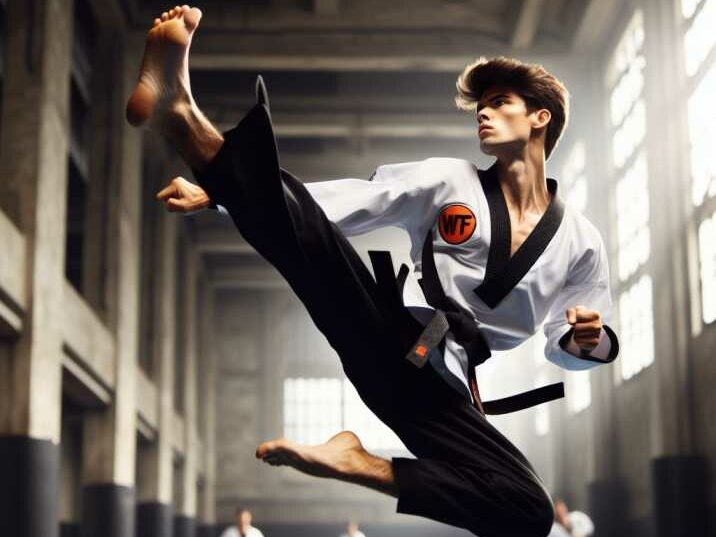WTF vs ITF Taekwondo
Table of Contents
Introduction
In the realm of martial arts, Taekwondo stands out as one of the most popular and widely practiced disciplines globally. Within this realm, two main organizations govern the practice and development of Taekwondo: the World Taekwondo Federation (WTF) and the International Taekwon-Do Federation (ITF). While both share a common root, they have evolved separately, each with its own set of rules, philosophies, and techniques. In this article, we’ll delve into the intricacies of WTF and ITF Taekwondo, providing a detailed comparison to help practitioners and enthusiasts alike understand the nuances of these two distinct styles.
Understanding the Origins
World Taekwondo Federation (WTF)
The WTF traces its roots back to South Korea in 1973, where it was established as the governing body for international Taekwondo competitions. With its headquarters in Seoul, the WTF has played a significant role in standardizing Taekwondo rules and regulations on a global scale. Its primary focus lies in Olympic-style Taekwondo, emphasizing fast-paced, dynamic sparring and high kicks.

International Taekwon-Do Federation (ITF)
On the other hand, the ITF was founded by General Choi Hong Hi in 1966, also in South Korea. General Choi, regarded as the father of Taekwondo, developed ITF Taekwondo as a more traditional and combat-oriented style. The ITF places greater emphasis on self-defense techniques, patterns (known as “Tul” in ITF terminology), and a deeper exploration of Taekwondo’s philosophical aspects.

Differences in Techniques
WTF Taekwondo
WTF Taekwondo, as practiced in Olympic competitions, emphasizes speed, agility, and precision. Kicks play a prominent role, with practitioners aiming for head-height kicks to score points. The emphasis on speed and athleticism is evident in the sparring style, where competitors engage in fast-paced exchanges to score points by striking designated target areas with controlled techniques.
ITF Taekwondo
In contrast, ITF Taekwondo focuses on a broader range of techniques, including hand strikes, joint locks, and throws, in addition to kicks. Patterns (Tul) are a central component of ITF training, with practitioners memorizing and performing sequences of movements that simulate combat scenarios. ITF sparring tends to be more structured, incorporating a wider variety of techniques beyond just kicks.
Philosophical Differences
WTF Taekwondo
WTF Taekwondo places a strong emphasis on sportsmanship, discipline, and respect for one’s opponents. As an Olympic sport, it adheres to strict rules and regulations governing competition, with an emphasis on fair play and adherence to the spirit of Taekwondo.
ITF Taekwondo
On the other hand, ITF Taekwondo places a greater emphasis on the martial aspect of the art, incorporating elements of traditional Korean philosophy and ethics into its practice. Respect for one’s instructor (Sahyun-Nim) and adherence to the tenets of Taekwondo (courtesy, integrity, perseverance, self-control, and indomitable spirit) are core principles of ITF training.
Comparison Table
| Aspect | WTF Taekwondo | ITF Taekwondo |
|---|---|---|
| Origins | Founded in 1973 by the WTF in South Korea | Founded in 1966 by General Choi Hong Hi in South Korea |
| Sparring Style | Fast-paced, dynamic, emphasizes head-height kicks | Structured, incorporates a wider range of techniques including hand strikes |
| Competition Focus | Olympic sport, standardized rules and regulations | Traditional martial art, emphasizes self-defense and combat |
| Philosophy | Sportsmanship, discipline, respect for opponents | Traditional Korean philosophy, emphasis on martial ethics and principles |
| Training Emphasis | Athleticism, precision, speed | Technique, self-defense, patterns (Tul) |
Conclusion
In conclusion, WTF and ITF Taekwondo represent two distinct approaches to the practice of this ancient martial art. While both share a common foundation, they have diverged over the years, each emphasizing different aspects of Taekwondo training and philosophy. Whether you’re drawn to the fast-paced athleticism of WTF Taekwondo or the traditional values of ITF Taekwondo, both offer valuable opportunities for physical fitness, mental discipline, and personal growth.
Frequently Asked Questions (FAQs)
- What does WTF stand for in Taekwondo?
- WTF stands for World Taekwondo Federation, the international governing body for Olympic-style Taekwondo.
- What does ITF stand for in Taekwondo?
- ITF stands for International Taekwon-Do Federation, an organization founded by General Choi Hong Hi to promote a more traditional approach to Taekwondo.
- Which is better, WTF or ITF Taekwondo?
- There is no definitive answer to this question as it largely depends on personal preferences and goals. WTF Taekwondo is geared towards sport and competition, while ITF Taekwondo focuses on traditional martial arts and self-defense.
- Can you switch from WTF to ITF Taekwondo, or vice versa?
- Yes, it is possible to switch between WTF and ITF Taekwondo, although there may be differences in training methods, techniques, and rules that require adjustment.
- Are there different belt systems in WTF and ITF Taekwondo?
- Yes, both WTF and ITF Taekwondo have their own belt systems, although they may vary in terms of belt colors and ranking requirements.


